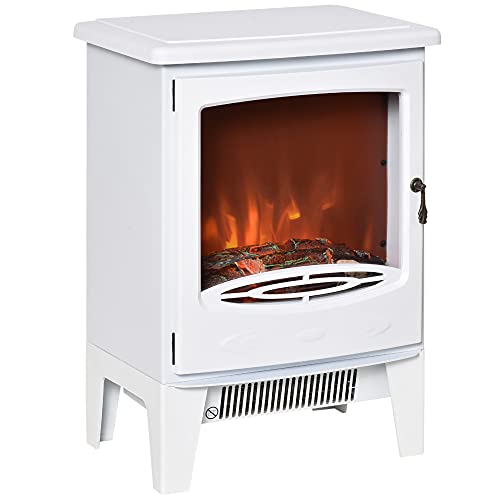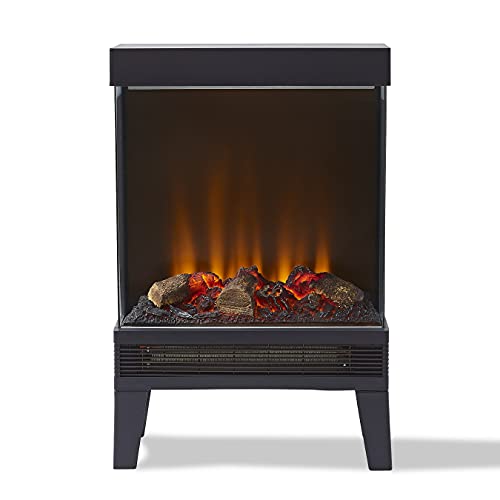
Fireplaces And Stove
Add a review FollowOverview
-
Founded Date March 26, 2004
-
Sectors pharmaceutical industry
-
Posted Jobs 0
-
Viewed 218
Company Description
The 3 Largest Disasters In Wood Burner Fireplace The Wood Burner Fireplace’s 3 Biggest Disasters In History
 How to Get the Most From a Wood Burner Fireplace
How to Get the Most From a Wood Burner Fireplace
Wood stoves, in contrast to traditional open fireplaces, are engineered to use wood for combustion. This allows them to comply with stricter emission regulations.
Wood burning stoves produce sparkling yellow flames and soft crackling sounds. They also give you an incredibly warm feeling. However the smoke they release includes carbon monoxide and harmful air pollutants such as formaldehyde, benzene and polycyclic aromatic hydrocarbons.
Efficient
Fireplaces and stoves that burn wood offer a stunning and natural heat to the home, but they are also incredibly efficient. A quality wood stove can be able to achieve an Ecodesign rating of up to 77 percent. It is vital to get the most out of your log stove, especially with increasing energy costs. The good news is it’s much easier than ever to do!
The moisture content of wood is one of the main factors that determines how efficient a wood-burning stove is. We recommend using only dried and seasoned wood that has dried over a period of at least one year, and in many cases two years. The dryer the wood is the more efficiently it burns which results in less smoke and harmful emissions.
A wood burning stove also has the benefit of being an environmentally friendly fuel source, which is beneficial to the environment. Furthermore, by buying locally-sourced firewood, you are aiding in the management of woodlands, which is a great aspect for wildlife.
The only thing a wood-burning stove requires in terms of maintenance is to remove and get rid of the ash. This can be a bit of a hassle but it is worth it in order to ensure that you get the most heat from each log. In addition when you wait for a couple of days for the ashes to completely cool, they can be reused as an eco-friendly and non-toxic ice melt. They can be used to polish jewelry and also absorb smells.
A fireplace with a wood burner is a truly timeless classic. While they’re not as popular than gas fireplaces, their appeal and appeal of a roaring fire cannot be disregarded. These fires are great to snuggle to on cold winter nights, and create a warm and welcoming space in your home. Making the investment in a top-quality wood burner will pay for itself for a long time. Our chimney sweeps are available to assist you in getting the most out of your stove. Give us a call today to find out more.
Low Carbon
Wood burners that are efficient and clean are the most effective option to save money while also keeping your home warm. They also support local woodland management. This is a great method to support wildlife in your local area.
Wood-burning fireplaces and stoves create minimal pollution when they are maintained properly and used with dry, seasoned and dry firewood. When they are not properly maintained or when they make use of wood that is not of high quality the smoke produced contains fine particles commonly referred to as particulate pollution, which can irritate the lungs and other organs of the body. It also contains carbon monoxide and harmful air pollutants such as formaldehyde, benzene and polycyclic aromatic hydrocarbons. Inhaling these types of air pollution can cause lung irritation as well as wheezing, coughing, and asthma attacks and may even lead to serious health issues such as heart disease, cancer, or premature death.
Many are concerned that wood-burning stoves can contribute to climate change, but this isn’t necessarily true. Burning wood is a carbon neutral energy source. The tree absorbs carbon dioxide over its lifetime. When burned, the carbon is released into the air.
The wood is local, which decreases the amount pollution that is emitted in the transportation process. It is also important to select high-quality, seasoned hardwoods as these will provide an extended and more consistent burn than softwoods.
Modern, EPA certified wood stoves and heaters (such as those manufactured by Charlton & Jenrick) have significantly lower emissions than older stoves. They have been tested and certified to meet the 2020 EPA standards which are much more stringent than previous emissions limits.
To prevent a build-up of exhaust in your home, all wood burning stoves should be vented fully to the outside. By keeping the flames away from the logs and making sure you make use of dry, seasoned wood, all of our current clean burn and DEFRA exempt stoves are capable of producing very clear exhaust. They also have particulate levels that are 60 or more lower than the DEFRA limit.
A wood-burning stove equipped with a catalytic converter can provide the most efficient low carbon solution for heating. These units re-ignite gases and particles that were ignited during the initial burning in a subsequent phase by mixing them superheated air. They then funnel the remaining particulates and gasses through a catalytic combustor for the third and final combustion, further the reduction of emissions to levels that is well below the government standards.
Clean Burn
Cleanburn wood stoves burn fuel with the highest possible efficiency. This results in the emission of a small amount of particles into the air when burning wood. The air management system of the stove controls the intake and exhaust of gases, ensuring that the combustion process occurs in a controlled and sealed environment. It also regulates flame height to maximize heat output and minimize emissions.
This means that your chimney as well as the surrounding area will be a lot cleaner than older stoves. Particulate matter, also known as particle pollution, resulting from incompletely burned wood can trigger respiratory problems, such as wheezing and coughing, and contribute to heart diseases, stroke, diabetes, and other serious conditions. Wood burning also contributes to poor air quality in cities.
The smoke from poorly combusted wood is a mixture of fine particulate pollution as well as hazardous air pollutants, including carbon monoxide volatile organic compounds, nitrogen oxides, benzene formaldehyde and polycyclic aromatic hydrocarbons. These particles can penetrate deep into the lung and other organs which can cause discomfort, damage and even death. Dust particles from the air can also damage the surfaces in your home and give a gritty feel to rooms.
If you’re using a fireplace with wood burning, it’s important to only make use of high-quality firewood that has been seasoned and dried. The most valuable woods for heating are hardwoods like oak, ash and beech. Hardwoods are incredibly dense and have a higher BTU content than softwoods. They also provide more heat.
Contact your local authority to find out if they have any rules concerning wood burning. They could include rules for nuisance or odor and visible emissions, or smoke opacity limits.
It is important to keep the glass of a wood stove with a glass front free of deposits and dirt. This can be done using a dry cloth or oven cleaner spray. You can also add bicarbonate of soda with a bit of water to the glass.
Regular maintenance is crucial for your chimney and stove. Regular chimney cleanings are required to eliminate creosote, and ensure that the flue works properly. It is also important to mark the dates for periodic inspections on your calendar. This will allow you to avoid costly repairs and prolong the life of your wood burner.
Low Maintenance
Many people choose to install wood burning fireplaces due to the natural warmth they create. This type of fireplace requires some maintenance and upkeep. If not maintained and cleaned regularly the chimney, flue and stove can all be potential sources of fires within your home. Fireplaces can also be a great source of heat when power is out, especially during winter when snow storms can cause branches of trees to fall and rip up power lines.
Utilizing a wood burner for heating will reduce your carbon footprint significantly in comparison to other fossil fuel sources like gas. Modern wood stoves and inserts are made to conform to EPA (Environmental Protection Agency) standards, which means that they produce very low emissions. The more well-seasoned wood you use the more efficient your stove will be. You’ll need less wood to get the same heat.
The Fireplaces And Stove need some care and maintenance. They should be placed away from materials that ignite and have a screen in place. Keeping the grate clear of debris and ash will aid in the flow of air, which will prevent the fire from dying out quickly. It will also help keep your indoors clean. You should have your stove and chimney swept at least twice per year to avoid creosote accumulation which could be a dangerous fire hazard and obstructions that could hinder circulation.
A wood burning stove needs to be tended constantly and it could take some time for a new homeowner to understand how to ignite, light and maintain a steady fire in the fireplace. But, once you’ve achieved the art of creating and maintaining a fire in your wood burner, it can be a source of lasting pleasure that can provide warmth and warmth to your home every year.
 Wood burning fireplaces have been in use in some form or another for over 500 years and they’ve gained a new following because of their energy efficiency, sustainability, and the natural warmth and smell of real wood. Talk with your local Regency dealer about the benefits of wood stoves or inserts for your home if you’re planning to purchase an entirely new heater.
Wood burning fireplaces have been in use in some form or another for over 500 years and they’ve gained a new following because of their energy efficiency, sustainability, and the natural warmth and smell of real wood. Talk with your local Regency dealer about the benefits of wood stoves or inserts for your home if you’re planning to purchase an entirely new heater.
